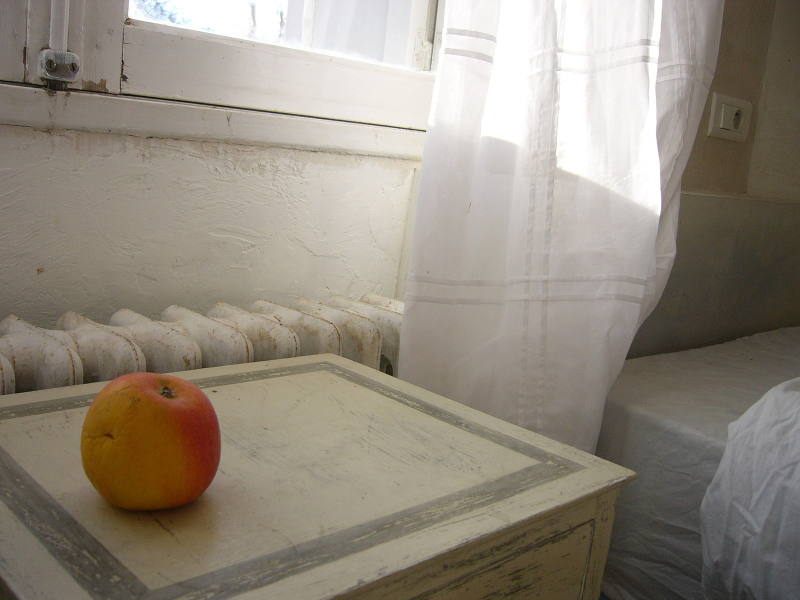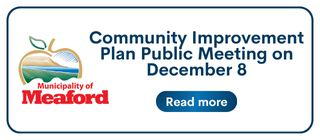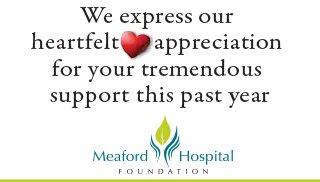Submitted by Peggy McIntosh, Member, The Institute of Southern Georgian Bay, Social Finance and Affordable Housing Committee.
The need for affordable rental units to house our community is more pressing than ever. This article will explore the current state of affordable rental housing in our area and offer opportunities to discuss potential solutions. There has been so much written – most readers are in overload, and if you open the discussion with colleagues, friends, or family they shudder and shut down. But discuss we must, or ignore, at our own peril.
Research continues to lend understanding, as dry as it is. According to HART (Housing Assessment Resource Tool), a housing report and forecast compiled by the University of British Columbia and Canada Mortgage and Housing Corporation (CMHC) using information from Statistics Canada, the Meaford median Household Income is $79,500. As you may have already read here and elsewhere, in the realm of housing, “affordable” refers to housing costs that do not exceed 30% of a household’s pre-tax income. The median Household in Meaford, therefore, can afford rent (or mortgage) of $1,988 per month.
The reality is, nearly 40% (exactly 38.29% according to the HART data) of households in our community have an income of $63,600 or below. About half of those households can afford rent (or mortgage) pricing between $398 and $994 per month. The other half can afford rent (or mortgage) pricing between $994 and $1,590 per month. At the time of writing, the only available advertised rentals in Meaford started at $2,600 per month. With rising housing prices and stagnant wages, we are seeing new segments of our population who simply cannot find affordable accommodation grow to include nurses, PSWs, tourism representatives and supports, restaurant and retail workers, and even small business operators.
Everyone who lives in this community will be affected by the shortage of affordable housing. If not tomorrow, then soon, the folks we depend on to serve, welcome, care for us, our families, and our visitors will not be able to live here. Rental rates in nearby communities are not much different, and in many cases, it is not reasonable to live elsewhere and commute here. Consider, for example, a PSW driving 25-45 minutes on Highway 26, in a winter snowstorm to feed your mother, sister, or husband in the Meaford Long Term Care facility, if there is no suitably affordable place for that PSW to live locally. Snowfall aside, to be sustainable, our community must be able to house our workers. Workforce mobility is a key element of community sustainability.
In Meaford, the Grey County Housing department offers deeply affordable community housing opportunities such as Victoria Village, Albert Place, Fairview, Georgian, Golden Town Manor, Meaford Family Units, and the Riverview Apartments. In Meaford that is an offering of 163 units, in addition to those limited affordable options that may exist in private dwellings and buildings, the community-service-club-held Godfrey Apartments, and unofficial rentals that have popped up in the community, including some motels.
The Grey County Housing website (https://www.grey.ca/resident-services/community-services/housing-programs-and-services/affordable-housing-locations) identifies which of their listed units are “geared to income” – charging 30% of each eligible tenant’s specific income, affordable units, and accessible units within each community housing unit. The numbers are all disturbing because there just are not enough units. We need to look at the housing gap for a low income population because that is the kind of work our community is built on. There is also a red alert for deeply affordable, accessible units. The County tally of identified affordable accessible units is currently under ten in Meaford. The HART report identifies, specifically, the percentage of households in Core Housing Need, by priority population and Income Category, and, not surprisingly, households with physical activity limitations and/or cognitive mental or addiction activity limitations, in Meaford are identified as having Low or Very Low Incomes, and 100% of them are identified as in Core housing Need.
As of 2021, there were 1,400 one-person households in Meaford. Statistics Canada identifies one-person households in Meaford as having a median income of $36,800 per year, thus half of those 1,400 households can pay a maximum housing cost of $920 per month on an affordable basis, which begs the question: where do these more than seven hundred households live? Existing occupied rentals in the community may accommodate these folks affordably, however some of these seven hundred may be living day to day without a secure sense of home, or with concern regarding the limited options available to them if their current circumstances were to shift. We have, anecdotally, heard of PSWs, servers, and community members living in over-crowded confined spaces, in older motel rooms, with their belongings outside the door, and even in the now older long term care facilities that were left behind, as new buildings were built for our seniors.
Also, given a limited supply of deeply affordable rental units with multiple bedrooms, larger households, including parents (often single parents) with children, and multi generational families may be living in equally stressful conditions. In recent conversation with providers of shelter and counselling for abused women in Meaford, women who experience abuse or violence at home often must stay in that risky environment because there are no available or affordable options to move to. These are all the invisible ‘at risk’ citizens in our community who need more affordable rental housing.
It is clear, if our community wants to keep, or attract, a population who are employed as workers in our long-term care facility, other health care providers, retail and restaurant businesses, and tourism options, we need to increase the number of available rentals in an affordable price bracket. Again, nationally, housing is considered affordable if households spend no more than 30% of household income on it – the workers in our service industries make between $15 and $25 per hour. Further, if the community intends to hold on to and support its aging population, who will undoubtedly have some cognitive or physical impairments, we need many more units being both affordable and accessible. Meaford’s median age is now fifty-four.
To explore options on what our future can be, it is critical to have a look at where we are now. On November 17, the Institute of Southern Georgian Bay (www.tisgb.com) will host a housing forum on New Ways to Finance the Housing Affordability Gap. The forum will be open to the public in the morning. Practical solutions which are working in other communities, most just like ours, will be presented and discussed with attendees, and in the afternoon, invited guests will work with concrete applications to build a foundation of understanding of ‘what can be’.
Peggy McIntosh has been a member of TISGB since 2021; she has served as Vice President of the Meaford Chamber of Commerce 2021-2023, and is currently Chair of Outreach, Meaford Rotary House where she is integral to the implementation of essential outreach services in Meaford.













